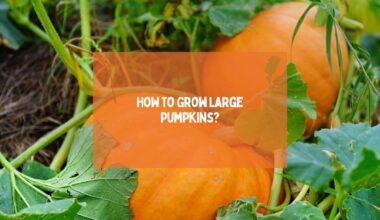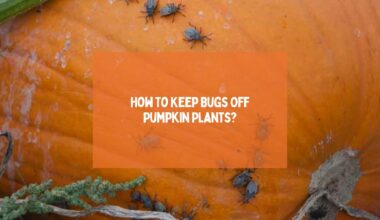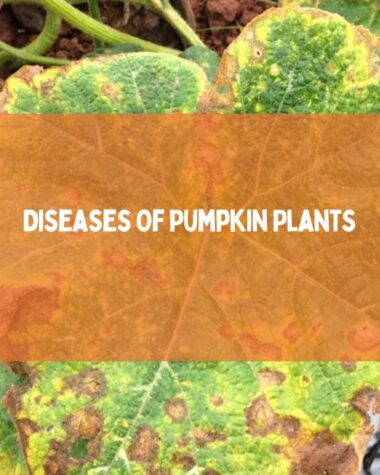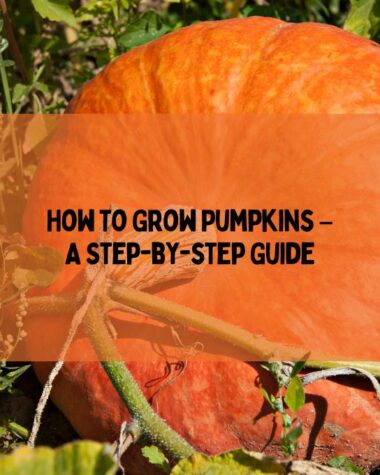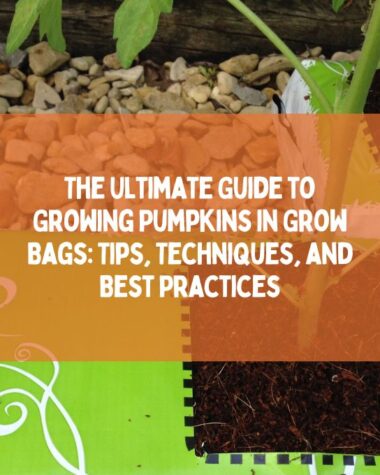If you love pumpkin plants or just want pumpkins for carving and fall decorations, you can certainly go to the nearest farm or store to buy a pumpkin. However, growing a pumpkin plant in your garden can be a fun and rewarding experience too, as they can provide a bountiful harvest of delicious and versatile fruits.
Pumpkins are warm-season plants that require a long growing season to produce mature fruit. The vines can grow up to 20 feet long and produce large, lobed leaves that are 4–8 inches wide.
In this article, we are going to provide information regarding how to grow pumpkin plants and their tips and tricks for harvesting a fully mature and scrumptious pumpkin.
Let’s see!
12 Tips to grow pumpkin plants in your garden
Cultivating pumpkin plants in your garden can be both challenging and pleasurable.
By following the tips given below, your plant is sure to prosper among the other plants in your garden.
1. Choose the right variety
Choosing the right variety of pumpkins is important for successful pumpkin growing in your garden. Some popular pumpkin varieties that you may consider for your garden include:
- Sugar Pie: This is a classic pumpkin variety that is well-suited for baking and making pumpkin pie
- Jack O’Lantern: This is a popular variety for carving and decoration. It has large in size and bright orange in color
- Cinderella: This is a unique and beautiful pumpkin variety with a flattened shape and a deep red-orange color.
- Baby Boo: This is a miniature white pumpkin variety that is perfect for decorating and crafts.
- Connecticut Field: This is a large, classic pumpkin variety that is well-suited for carving and decoration
There are many more varieties out there that you can grow in your garden, and by doing some research on different pumpkin varieties, you can select the right variety for your garden and enjoy a successful pumpkin harvest.
2. Choose a sunny spot
Pumpkins need plenty of sunlight to grow and produce fruit. Choose a spot in your garden that receives at least six hours of direct sunlight each day. When pumpkin plants receive sufficient sunlight, they can produce enough energy to grow large, healthy leaves and develop strong stems.
The warmth of the sun helps stimulate the growth of pumpkin plants, which is why they grow best in warm, sunny environments. Without adequate sunlight, pumpkin plants will not be able to produce enough energy to support their growth and development, resulting in weak and unhealthy plants.
Related Reading
3. Use well-draining soil
Well-draining soil is essential for pumpkin plants to thrive because it promotes healthy root development and prevents waterlogging, which can lead to root rot and other fungal diseases. When the soil is poorly drained, water accumulates around the roots, reducing the oxygen supply to the root.
As a result, the plant becomes weak and unable to absorb nutrients effectively, which can cause stunted growth, yellowing of the leaves, and ultimately, death.
On the other hand, allows excess hand, well-draining soil to drain away quickly, preventing waterlogging and providing the roots with the oxygen they need to function properly.
4. Start seeds indoors
Pumpkin plants are often started indoors because it allows gardeners to get a head start on the growing season and provides a controlled environment that can help promote healthy growth.
Indoor environments provide greater control over the growing conditions for pumpkin plants, such as temperature, light, and moisture levels. Indoor growing environments are generally more sterile than outdoor environments, which can help stave off the spread of disease and reduce the risk of pest infestations.
In contrast, outdoor conditions can be more variable and unpredictable, which can affect the germination rates and growth of pumpkin plants.
5. Space the plants correctly
Spacing pumpkin seeds correctly is important because it promotes healthy growth, prevents the spread of diseases, and allows for maximum yield.
When pumpkin plants are crowded, they compete for resources, which can result in weak and undersized growth. Crowded plants are also more susceptible to diseases and nuisances and may produce smaller fruits.
Proper spacing ensures that pumpkin plants have enough room to grow and develop properly.
6. Provide plenty of space
Pumpkin plants need plenty of space for growth to assure healthy development, good air circulation, deter pests and diseases, and maximize yield.
Proper spacing allows pumpkin plants access to adequate nutrients, water, and sunlight. Moreover, with more room to spread out, pumpkin plants can produce larger fruits, resulting in a higher yield.
By providing enough space, you can help confirm that your pumpkin plants thrive and produce a bountiful harvest.
7. Weed the area regularly
Regular weeding of the area around pumpkin plants is important to discourage competition for nutrients, water, and sunlight, prevent pests and diseases from dispersing, and maintain a neat appearance.
Weeds can also harbor pests and ailments, which can negatively affect the growth and yield of pumpkin plants. By keeping the area weed-free, pumpkin plants have the best chance of prospering and producing a bumper harvest
8. Water deeply
Pumpkin plants should be watered deeply because it promotes healthy root development, increases drought tolerance, ensures proper nutrient uptake, and supports strong growth and higher outputs.
By watering deeply, the roots are encouraged to grow deeper into the soil in search of moisture, making the plants more drought-tolerant and able to access nutrients where they are needed most.
9. Provide support
Pumpkin plants need support to thrive because their fruits can become quite heavy as they grow and mature. Without support, the fruits may break off the vine or cause the vine to collapse, which can lead to restricted growth or a lower outcome.
Supporting pumpkin plants can also save space in the garden by training them to grow vertically instead of sprawling out horizontally.
Besides, support can promote better air circulation around the plant and make sure that leaves and fruits receive adequate sunlight for leaf increase and fruit development.
10. Monitor pests and diseases
By monitoring pumpkin plants for pests and diseases, you can catch any problems early and take action to prevent them from stretching out or causing significant damage. To monitor pests and diseases on pumpkin plants, you can:
- Check leaves and stems regularly for signs of damage or discoloration.
- Look for any pests, such as aphids, squash bugs, or spider mites, that may be feeding on the plant.
- Use sticky traps to monitor for pests like cucumber beetles.
- Check the undersides of leaves for eggs, larvae, or adult insects
- Keep an eye out for any signs of fungal or bacterial diseases, such as powdery mildew or black rot.
11. Harvest at the right time
Harvesting pumpkins at the right time is important to guarantee that they are fully mature and have reached their maximum size and flavor.
Generally, pumpkins are ready to harvest when they have reached full color and the rind is hard and cannot be punctured easily with a fingernail. The stem should also be dry and starting to crack, indicating that the pumpkin is fully detached from the vine.
It is important to harvest pumpkins before the first frost, as cold temperatures can damage the fruits and reduce their quality.
12. Cure the pumpkin
Curing helps harden the skin of the pumpkin, making it more resistant to decay and extending its storage life. Curing can also kill off any bacteria or fungi that may be present on the surface of the pumpkin, reducing the risk of spoilage.
To cure pumpkins, they should be placed in a dry, well-ventilated area with temperatures between 80 and 85°F (27 and 29°C) for about 10 to 14 days. During these two weeks, the pumpkin’s skin will harden and the flavors will fully develop.
After curing, pumpkins should be stored in a cool, dry place away from direct sunlight for several months.
Related Reading:
- How to Grow Cucumbers From a Cucumber?
- When to Transplant Zucchini Seedlings? Let’s find out
- How to Grow Tomatoes – The step-by-step Guide from Seeds to Harvest
Conclusion
For beginner gardeners, growing a pumpkin plant can prove to be quite demanding at first, but over time, with enough understanding, anyone can obtain this experience, which has both aesthetic and practical advantages.
Planting and caring for a pumpkin plant can be an educational experience for children and adults alike. It can teach valuable lessons about gardening, plant care, and the importance of healthy eating.
Thanks for reading.
